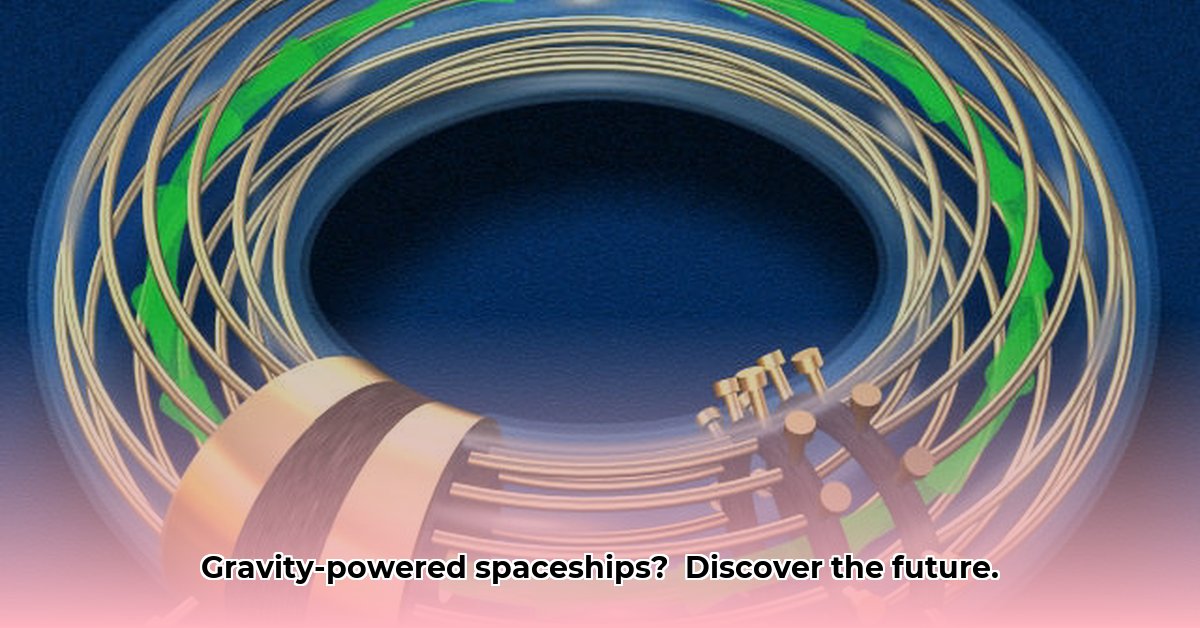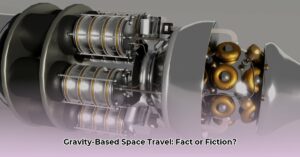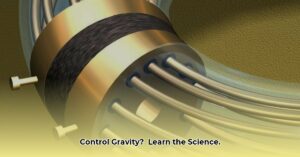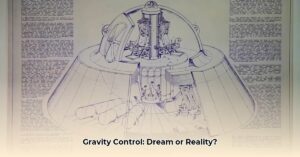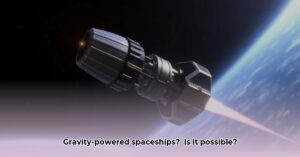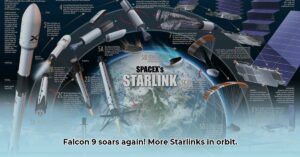The Allure of Gravity-Driven Spaceflight
Imagine traversing the cosmos, propelled not by fiery rockets but by the very force that binds the universe: gravity. This is the captivating vision of gravitic propulsion, a revolutionary concept poised to reshape space exploration. By theoretically harnessing gravity, this futuristic technology promises advantages that could transform how we voyage among the stars.
Fuel-Free Freedom
One of the greatest hurdles in space travel is the sheer mass of fuel required. Gravitic propulsion, by potentially eliminating this need, could usher in an era of lighter, more efficient spacecraft capable of longer missions and deeper exploration. Imagine a vehicle powered by the very space it travels through—this is the fundamental idea behind using gravity as propellant.
A Gentle Giant
Unlike traditional rockets that leave a trail of exhaust, gravitic propulsion offers a cleaner, greener alternative. Its theoretical fuel-free nature translates to silent, emission-free travel, minimizing our impact on the delicate cosmic environment.
Beyond the Speed of Light?
Perhaps the most tantalizing prospect of gravitic propulsion is the theoretical possibility of faster-than-light travel. Some theories suggest manipulating gravity could warp spacetime itself, creating shortcuts across vast interstellar distances. Concepts like the Alcubierre drive, while highly speculative, hint at the potential for reaching other star systems within a human lifetime. This remains, however, firmly in the realm of theoretical physics, facing significant technological and theoretical hurdles.
Agile Among the Asteroids
Maneuvering in space with current technology can be a slow, complex process. Gravitic propulsion could offer unparalleled agility. By interacting directly with gravitational fields, a spacecraft might achieve near-instantaneous changes in direction and velocity, simplifying navigation through asteroid fields or planetary systems.
The Enigmatic Biefeld-Brown Effect
The Biefeld-Brown effect, a thrust observed in asymmetric capacitors under high voltage, has sparked curiosity about gravity manipulation. While generally attributed to ion wind, some speculate it might offer clues to a deeper connection between electricity and gravity.
Charting the Unknown
Realizing the potential of gravitic propulsion presents immense challenges. Our understanding of gravity remains incomplete, and manipulating it for propulsion requires significant scientific breakthroughs. This is a frontier where current physics may not offer all the answers, and success is far from certain.
Comparing Propulsion Systems
| Feature | Traditional Propulsion | Gravitic Propulsion (Theoretical) |
|---|---|---|
| Fuel | Required | Not Required |
| Speed | Limited by current technology | Potentially faster than light |
| Maneuverability | Limited | Potentially high |
| Environmental Impact | Significant | Potentially very low |
| Technological Maturity | Currently in use | Highly theoretical |
Unlocking the Cosmos: Exploring the Benefits of Gravitic Propulsion
Gravitic propulsion, sometimes referred to as a “gravity drive,” offers a compelling vision for the future of space travel. Let’s delve into the potential advantages of harnessing this fundamental force.
By manipulating gravity, spacecraft could potentially “fall” towards their destinations, eliminating the need for massive fuel tanks. This would revolutionize spacecraft design, enabling smaller, lighter, and more efficient vehicles capable of exploring deeper into the cosmos.
Enhanced maneuverability is another potential benefit. Imagine a spacecraft capable of instantly changing direction by adjusting its generated gravitational field. This would open up possibilities for navigating complex environments like asteroid fields with ease.
The potential for faster-than-light travel, though highly speculative, remains a driving force behind gravitic propulsion research. If we could warp spacetime, as some theories suggest, we might create shortcuts across the universe, drastically reducing travel times.
| Potential Advantage | Explanation | Current Limitations |
|---|---|---|
| Fuel Efficiency | Eliminates the need for traditional rocket fuel. | Achieving controlled gravity generation is beyond our current capabilities. |
| Increased Speed | Potentially allows for faster-than-light travel by warping spacetime. | Theoretical possibilities with no practical implementation yet. |
| Enhanced Maneuverability | Enables smooth and near-instantaneous changes in trajectory. | Requires precise control over generated gravity. |
| Reduced Travel Time | Shortens travel time to distant destinations. | Dependent on achieving the theoretical benefits of gravity manipulation. |
| Minimized G-Forces | Offers smoother acceleration, reducing strain on astronauts. | Requires a stable and controllable gravitational field within the spacecraft |
However, realizing gravitic propulsion faces formidable challenges. Creating and controlling gravitational fields in the way needed requires significant breakthroughs in our understanding of physics. While some theories, like string theory, offer potential pathways, they remain speculative. The existence and manipulation of exotic matter, with negative mass-energy density, also pose a significant hurdle.
Despite these challenges, the potential rewards of gravitic propulsion motivate continued research. Continued exploration into the nature of gravity, alongside advances in physics and engineering, may one day unlock the secrets to manipulating this fundamental force, transforming interstellar travel from dream to reality.
A Greener Galaxy: The Environmental Promise of Gravitic Propulsion
Conventional rockets, while powerful, have a significant environmental impact. Gravitic propulsion, by contrast, offers the possibility of fuel-free and emission-free space travel, minimizing our footprint on Earth and in space.
The Vital Role of Gravity on Earth
Before exploring the theoretical benefits of gravitic propulsion, let’s appreciate the essential role gravity plays on Earth. It retains our atmosphere, protecting us from harmful radiation and regulating temperature. It drives ocean currents, impacting weather patterns and marine ecosystems. It also played a fundamental role in Earth’s formation and maintains its structure, enabling stable ecosystems.
The Promise of Gravitic Propulsion
Gravitic propulsion envisions harnessing gravity for spacecraft movement, potentially offering fuel-free travel, reduced emissions, unprecedented speeds, and enhanced maneuverability.
Navigating the Uncertainties
While the concept is exciting, gravitic propulsion remains largely theoretical. It’s important to distinguish between genuine gravitic propulsion and other forms of “propellantless” propulsion, which often rely on different principles.
| Concept | Description | Challenges |
|---|---|---|
| Gravitic Propulsion | Manipulating gravity for spacecraft movement | Highly theoretical, no working prototypes |
| Propellantless Drives | Spacecraft propulsion without traditional fuels | May not involve gravity manipulation |
| Alcubierre Drive | Warping spacetime for faster-than-light travel | Requires exotic matter and immense energy |
The Alcubierre drive, while intriguing, faces substantial challenges, notably the requirement for exotic matter and enormous energy demands.
While achieving gravitic propulsion remains a distant prospect, research continues to push our understanding of gravity. As science progresses, we might discover new ways to harness this fundamental force, unlocking a future of sustainable space travel and making a greener galaxy a reality.
Warp Speed Ahead? Gravitic Propulsion and Faster-Than-Light Travel
Faster-than-light (FTL) travel has long captured our imagination. Could gravitic propulsion be the key? One concept, the Alcubierre drive, proposes warping spacetime to create a “warp bubble” around a spacecraft. By contracting space in front and expanding it behind, the spacecraft could effectively travel faster than light without locally exceeding light speed within the bubble. This, however, relies on the existence and harnessing of “exotic matter,” a hypothetical substance with negative mass-energy density, which has never been observed.
The potential benefits of FTL travel via gravitic propulsion are immense. Interstellar travel could become a reality, opening up a new era of exploration. Fuel efficiency would be dramatically improved, and the g-forces experienced by astronauts significantly reduced.
Current research is largely theoretical. Scientists are exploring concepts like the Biefeld-Brown effect and Mach effects, seeking potential connections between gravity and electromagnetism or inertia as a propulsion source. While these are intriguing lines of inquiry, they are far from demonstrating FTL travel.
Achieving FTL travel via gravitic propulsion requires overcoming immense technical hurdles. Our understanding of gravity is incomplete, and manipulating it in the way required remains firmly in the realm of speculation. However, the continued pursuit of this dream fuels scientific progress and inspires us to push the boundaries of what’s possible.

